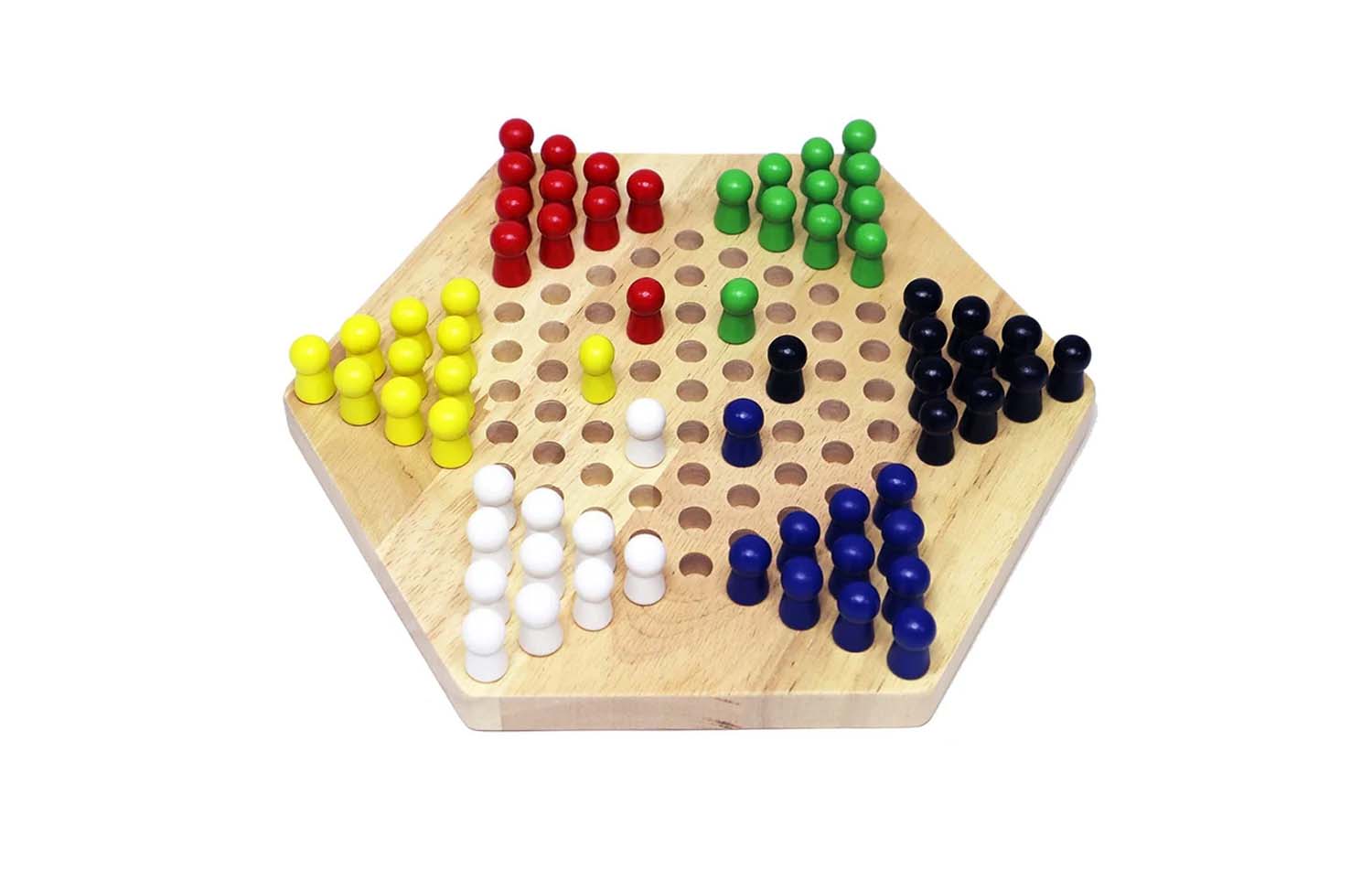Introduction
Chinese Checkers is a very old game that has endured the ages and still people play it. The game was developed in Germany in 1892 and was called Stern-alma. It was then introduced in America in 1928 with the new name, Chinese checkers. ‘Go’ in fact has no implied relation to China even though it may take after the Victorian “Halma”. At Universal Wooden Toys, we feel that every Chinese checkerboard that we offer must be of the highest possible quality, and made available to all enthusiasts playing the game.
Understanding Chinese Checkers
Chinese Checkers, which is also sometimes referred to as Chinese Chequers, is different from all other board games because it resembles a six-pointed star board instead of a square or rectangular board. All the points of the star are made up of triangles containing either 10 or 4 holes which are shaped into hexagons in the center. Oppositely, the pegs are colored differently in each triangle. Game consists of basic ten-piece sets of six colors- for each colour there is ten pieces.
Preparation
Chinese Checkers (2, 3, 4, or even 6 players) is suitable for everyone. In a 6-player game, all pieces and triangles are incorporated into play, and in a 4-player game, the play starts with two pairs of opposing triangles. In the same way, a two-player game also starts as the opposite of triangles. In a three-player game, the pegs are arranged in three equal-distance triangles.
Players choose a color and put the pegs of their own color into the corresponding triangle. It is important to note that some of the rules suggest keeping unused triangles occupied with pegs. However, leaving these triangles empty presents another strategic complication, as pegs can hop through a triangle and rest in it if they are needed.
Objective
The aim of the game is to be the first player to make all ten pegs successful across the board and to the triangle opposite your initial position. The player who lands in all 10 places first is the one who wins the game.
How to Play
We use a coin toss to make the decision regarding which is the first player. The players take turns in the game by only one peg (of their colour). A peg can be in between another hole or made to jump the other pegs. At each jump, you are required to clear the peg located adjacent to the vacant hole of the next position. In any of the forward, backward, left, or right directions, the characters can jump.
On every jump, the player can call it a day and end the turn or attempt to jump towards other pegs as long as they are not blocked. On rare occasions, a competitor might go on to make a twist-turn that will take one peg away from the starting triangle to the opposite triangle.
The pegs stay on the game board. As soon as a peg reaches the opposite triangle, it is locked there, and hence, can only be moved inside the triangle, not out of it.
Regarding moving a peg into a triangle that serves as the starting or target triangle for another player, house rules may apply. However, it is generally accepted that a peg can be hopped through such a triangle but cannot come to rest in it.
Benefits for Kids
This game offers numerous benefits for children, making it an excellent choice for family game nights and educational activities. Here are some ways it benefits kids:
- Cognitive Development: This game helps children develop critical thinking skills as they strategize their moves to outsmart opponents. It enhances their problem-solving abilities and encourages forward planning.
- Memory Enhancement: Remembering the positions of pegs and planning future moves exercises children’s memory skills. It improves their ability to recall information and enhances their cognitive abilities.
- Fine Motor Skills: Moving pegs across the board requires precision and coordination, helping children develop their fine motor skills. It enhances their hand-eye coordination and finger dexterity, which are essential for various activities and tasks.
- Patience and Persistence: Chinese Checkers teaches children the value of patience and persistence. They learn to remain focused and determined even when facing challenges or setbacks in the game.
By incorporating Chinese Checkers into children’s playtime, parents can provide them with a fun and engaging way to learn and grow. It offers a holistic learning experience that combines cognitive, and physical development, making it a valuable addition to any child’s recreational activities.
Conclusion
By understanding the rules and mastering the strategies outlined in this guide, players can elevate their gameplay and fully appreciate the excitement of Chinese Checkers. Remember, you can purchase high-quality Chinese checkers boards from our website, enabling you to enjoy countless hours of entertainment and friendly competition. So, gather your loved ones, set up the board, and embark on a journey of entertainment and enjoyment.

